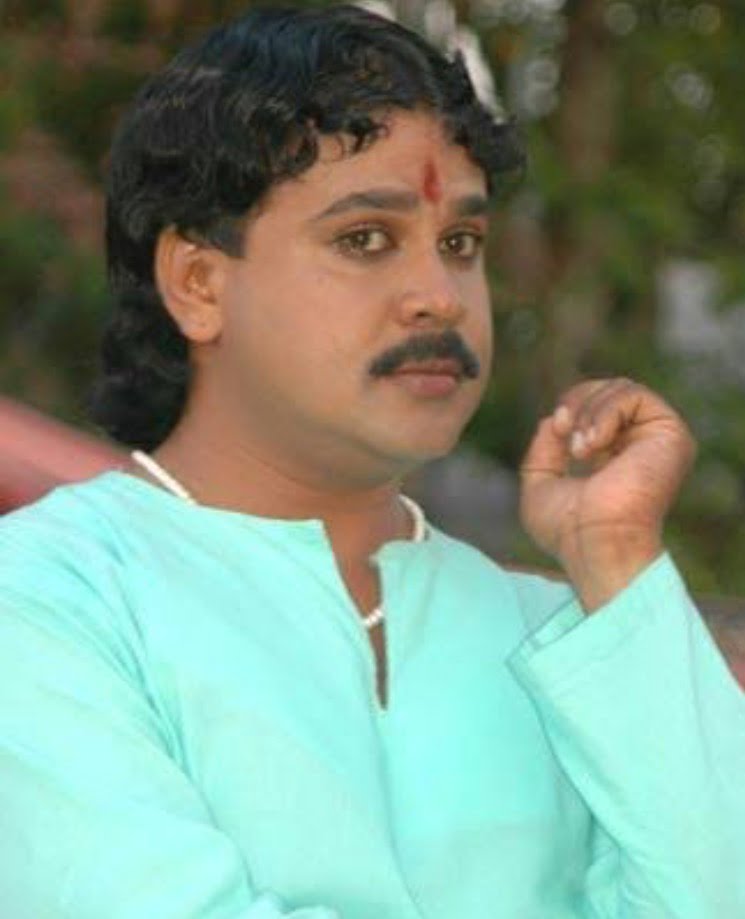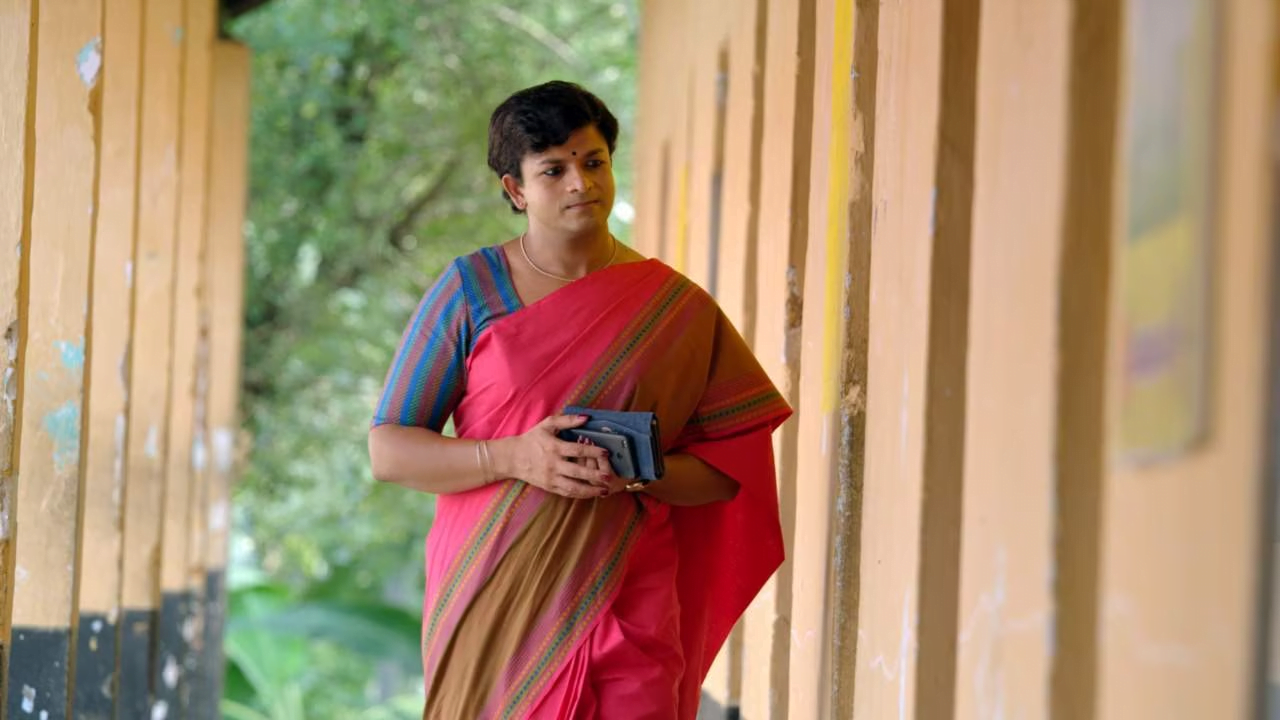Trans characters being a joke and having a tragic life are now criticised and talked about in film circles. The heteronormativity prevailing in society, which takes gender identities and sexual orientation in binary terms as natural/default, gets propagated and reinforced through this representation.
Another way heteronormative society operates is through misrepresentation or appropriation, especially in the case of trans characters. Cisgender actors who play the role of trans and non-binary characters are stealing the space from people who have a marginalised background.
From the early years, the representation of male characters being feminine was a subject of comedy relief in films; Malayalam film Chanthupottu (2005), which was later adapted as a derogatory term for “men who do not conform to traditionally masculine norms,” is one of the pioneers in this case. The director of the film, Lal Jose, refused to apologise and tried to justify his characterisation of Radhakrishnan, the lead in the film. The second half of the film attempts to groom Radhakrishnan to become a “man.” The film ends with Radhakrishnan refusing to raise his son with any “tint” of femininity.

The 2004 Hindi film Masti has a scene where a trans woman kisses one of the protagonists without him knowing that the ‘woman‘ is a trans person. When he realises her “truth,” he panics and washes his mouth. This ‘finding out of truth‘ about their romantic interests who are trans exists as an event which denotes trans persons exist to trap others. This also reinforces the stigma that already exists in the society.
In their research on representation, Annette Kuhn argues that “all representations are coded, and they do not merely reflect a world outside the bounds of the text, but also mediate external discourses, as it was rewriting and constructing them.”
Similarly, the 2021 Hindi film Chandigarh Kare Aashiqui was appreciated for selecting a “brave” subject and has received much attention in the country. The film was trying to discuss the issues transgender persons go through in the course of life but ended up with an insensitive narrative.
The film portrays the character of a trans woman, who is played by a cisgender woman, as a ‘trap‘ character, from the point of view of the male protagonist. (Trans and non-binary characters are often called traps, a slur that involves revealing a character’s assigned gender and is considered a trick.)
Trans panic defence is used by people who claim that this violent act was a sudden emotional response to an unwanted advance from a transgender person with whom the assailant is engaged in sexual relations. According to Alexis (2017), this tricking and deserving to be murdered is associated with the problematic portrayal of trans characters.
The jokes and insults related to the male protagonist “finding out the truth” about the trans woman character in the film are entirely from the male protagonist’s point of view, where they discuss how he could not recognise these facts about her.
The character of Sathaar in Thangam is one of the celebrated trans characters who leads a precarious life and is sacrificed for her loved ones. The character of Sathaar is portrayed by Kalidas Jayaram, a Cisgender Heterosexual man, and thereby the film eventually steals the space and visibility of trans characters. The actor once shared the experience of being with and meeting trans people to play the role of a trans character in the film, which will be the only part where a trans character got to do in a film about the plight of transgender persons.
The invisibility of trans actors and artists behind the camera, even though we make films with trans characters in them, is a result of tokenism rather than an actual representation. Tokenism is described as the “representational gesture” for appearing inclusive about diverse backgrounds and marginalized by creating a fallacy. Representation works towards educating and inclusion, whereas tokenism is harmful in every way.
Moothon (2019) is well appreciated for portraying the character, queerness and the story. Yet, the film never had trans representation on and off the screen though the film had trans characters. Moreover, the director Geethu Mohandas cast a cisgender heterosexual man to play the gay character in the leading role.
The irony is that she calls Nivin Pauly, the actor who played the role, “brave“- “It was very brave of him to do such a character because he has an established fan base.” The politics which the film is talking about are highly appreciable. Still, the factor the film used cisgender actors to play the role of a trans woman- Latheef can be only seen as an act of appeasement.
Murder 2 (2011) portrays a trans character as a murderer who abducts and kills sex workers. Several mainstream films, like Tamanna and Apna Sapna Money Money, reinforce dangerous perceptions about the trans community. The films such as Super Deluxe, where cisgender actor Vijay Sethupathi played the role of a trans woman, apart from the cisgender person stealing the representational space, the film and the characters do not accept the character of a trans woman as “woman.”
Along with that, Njan Marykutty, where Jayasurya plays the role of a trans woman, is an example where the filmmakers tried to talk about the issues the trans community face. Still, they decided to cast a cisgender man who enjoys privileges in our patriarchal and heteronormative society to play the role of a transgender person who struggles with employment opportunities, education, housing, and even fundamental human rights.
Regarding the lack of trans presence behind and on the camera, trans actor Sushant Divgikar has raised questions about the casting of cisgender actors as trans characters.
The role of culture in shaping gender relations and inequalities is rooted in the construction of gender socially. Theories related to media and culture see representation as a huge political issue, where we can see the ‘naturalness‘ of media representations of trans persons as evidence of heteronormative ideologies. Constructing specific communities, their cultural acts and symbols as legitimate and authoritative while marginalising others will reinforce the hierarchies of different social identities.
India, with the recent Transgender Protection of rights act of 2019, is already on the setback for the significant progress made in the last few years. We witness the visibility of trans and queerness in films and media, but at the same time, there is increased violence against trans and Queer communities altogether.




